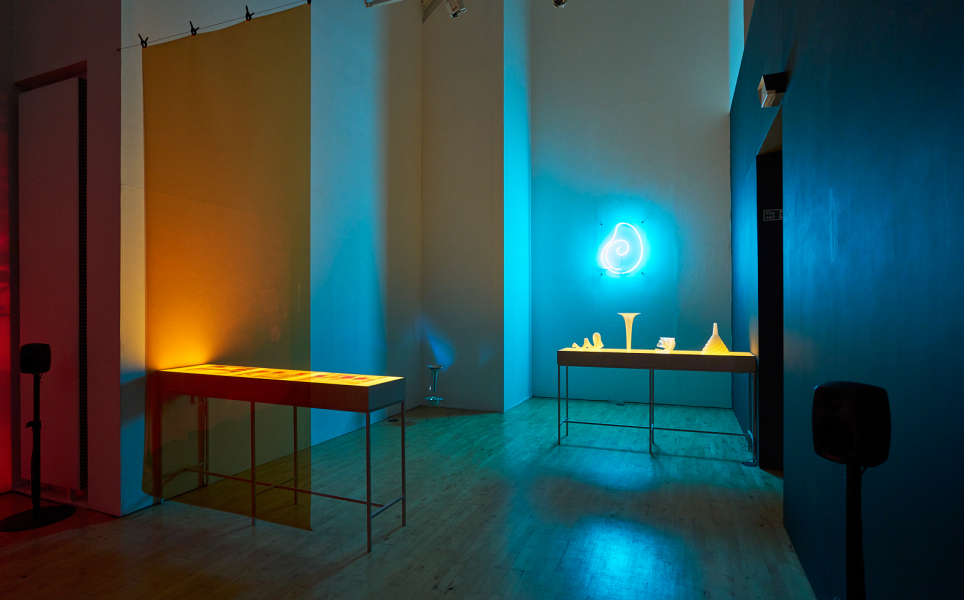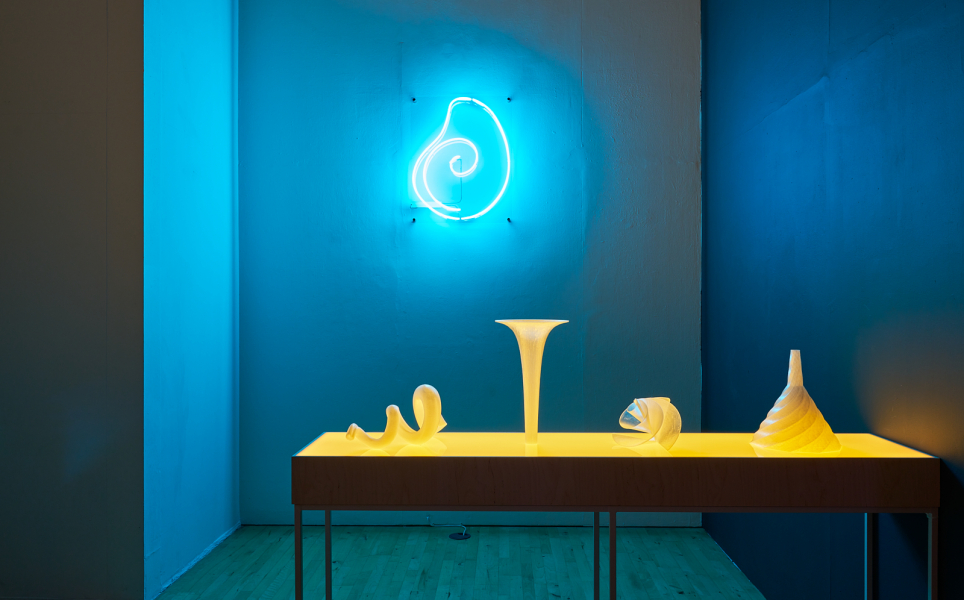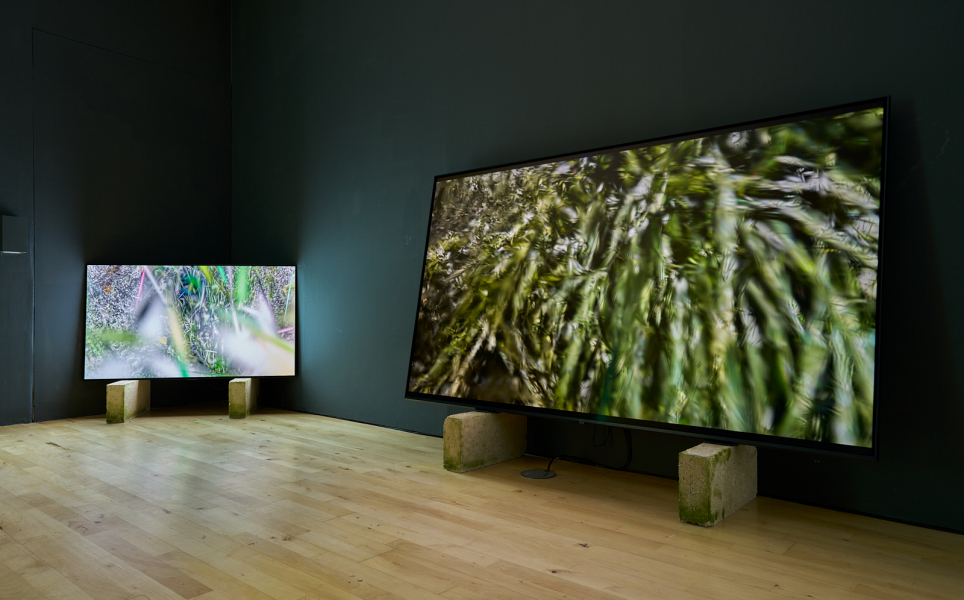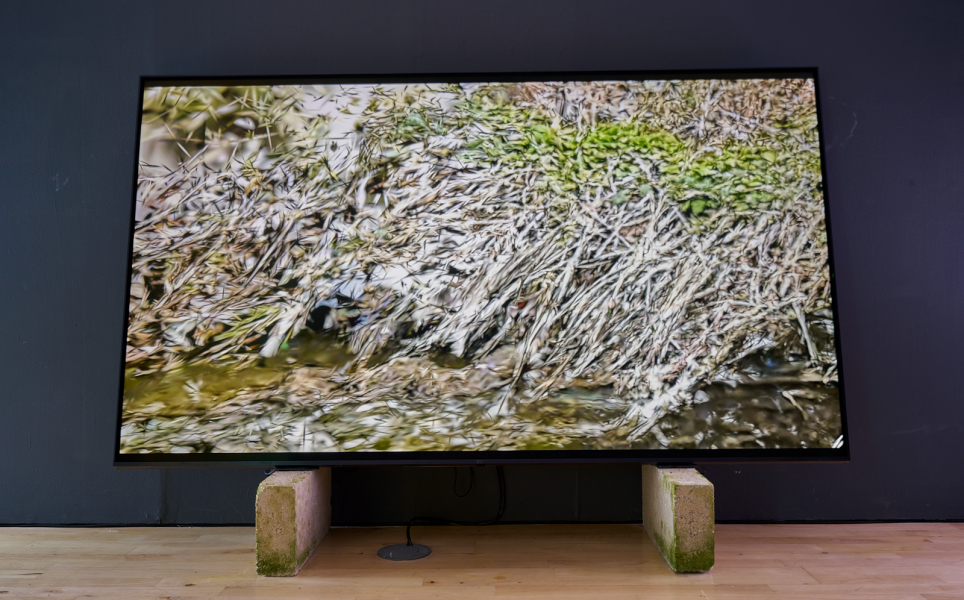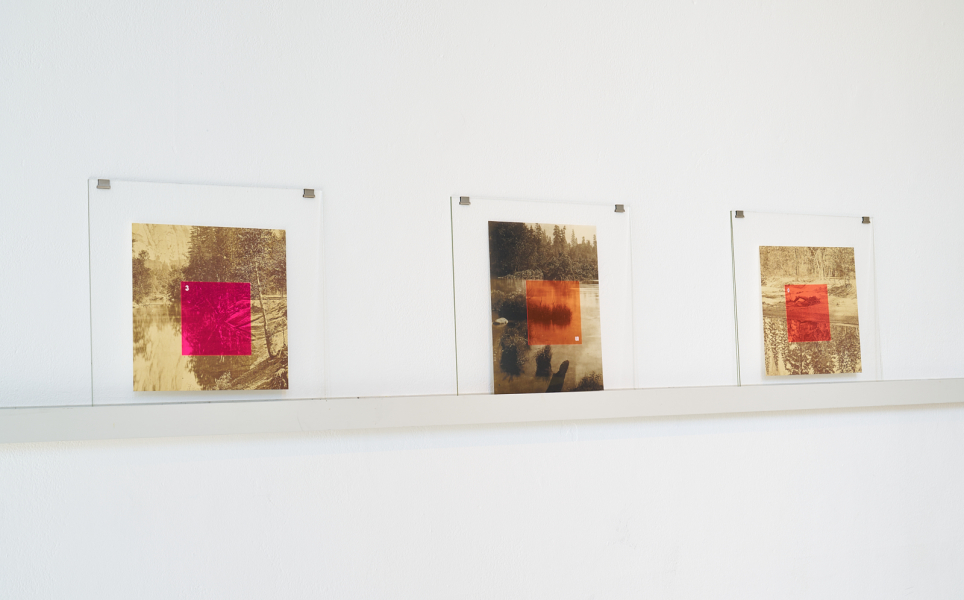Stanley Picker Fellow Thomas Pausz’ solo show Haunted Ecologies intersects the research fields of media, ecology and ‘hauntology’ – the understanding that our perception of contemporary environment and culture is always haunted by spectres of the past and by hopes and visions of the future – to propose an immersive installation echoing the transformations of local ecosystems.
The Stanley Picker Gallery is situated on an island along the Hogsmill River, a tributary of the Thames whose riverbank flora is immortalised in John Everett Millais’ famous painting of Ophelia. This exhibition presents a collection of works inspired by the ecology of the surrounding river. The installation echoes the transformations of the river over time and traces how, from Eadweard Muybridge’s landscape photography to contemporary digital image making techniques, the media constellations we design are evolving with and changing our perception of the ecosystem.
As a chalk stream, the Hogsmill River has an increasingly endangered ecology due to excessive extraction of water and increasing sewer discharge. This influx of sewage water on the one hand radically raises the nutrient level of the river, benefitting certain plants and hence causing changes in biodiversity, on the other it also introduces a large variety of harmful polluting substances.
Eadweard Muybridge (Kingston Upon Thames 1830 – 1904) became world renowned for his innovative studies of animals in motion, but was also an accomplished landscape photographer. In her book River of Shadows Rebecca Solnit1 details how Muybridge often superimposed separate images of clouds onto his photographs, creating composite images to achieve more dramatic visual effects. The original photograph at the entrance of the gallery was taken in Yosemite on Muybridge’s travels through America c. 1872. This work forms part of the Royal Borough of Kingston’s Muybridge Collection now archived at Kingston University’s Town House Library.
Darkroom is a video projection with 4.1 sound that links to Pausz’ research on 19th century spirit photography, and how the techniques developed to manufacture ‘ghost’ images were later used to modify landscapes. William H. Mumler was the first to introduce this genre as he became known for capturing iconic translucent ‘spirits’ which appeared next to portraits of living subjects. Mumler was later taken to court and prosecuted for fraud, and while never convicted, he was publicly shamed and eventually threw all of his photographic materials into the Hudson River2. During his early Fellowship experiments, Pausz took photos of the Hogsmill River and immediately developed them in the darkroom, going back and forth between the two. His film, shot with a so-called phantom high-speed camera, documents the process of developing the images, and is accompanied by a composition with sounds recorded by Pausz near Tolworth using hydrophones to capture sewers discharging into the Hogsmill. The soundscape was composed by the artist in collaboration with Tom Manoury to create the immersive environment.
Pausz has been researching techniques to filter and to revitalise water, especially in relation to environmentalist, philosopher and inventor Viktor Schauberger, who was specifically interested in the flow of water and the potential energies harvested from it; and Dr Masaru Emoto, whose research centred around the memory and molecular structures of water. Building on their ideas, Schauberger’s Cabinet consists of a neon light of a whirlpool, a lightbox with elaborate 3D printed funnels that can help animate and energise water, as well as smaller lightboxes with 3D printed reliefs capturing the unique patterns droplets form as they hit the surface of water.
In the second gallery, Sources features four videos, each taken of a specific site where sewage water enters the Hogsmill River. The footage documents the plant life, insects and suburban fabric of the ecology of the sites, and was shot using various methods, including a new rendering technique for 3D scanning. The accompanying sound, also composed of recordings from the sites, feels harsh with frequent interruptions and translates the experience of the sudden changes and disturbances in the river.
1) Rebecca Solnit: River of Shadows. Eadweard Muybridge and the Technological Wild West. Bloomsbury, UK, 2003.
2) Tony Oursler: Notes on Mysticism and Visual Transects. In: Séance. Ed. by Shannon Taggart, Atelier Éditions, Los Angeles, 2022.






